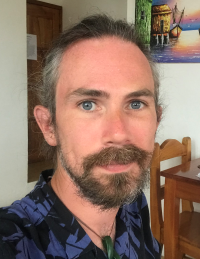Geoscientific Colloquium
Magnetism and Hydrothermalism: A winning combination
Organiser: Dr. Florent Szitkar (Geological Survey of Norway)
Location: only online (via Zoom)
Start Time: 01/12/2022 12:15
Category: Geoscientific Colloquium

Since the discovery of hydrothermalism in the 1970s, underwater exploration has unraveled an unexpected diversity of hydrothermal sites in terms of geology, minerals and fluids. Hydrothermal fluids drain minerals from the deep crust, which progressively form mineral deposits that could become interesting mining targets. Inactive hydrothermal fields are more appealing than active ones because: (1) they have reached their maximal size, (2) no hydrothermal fauna remains and (3) high temperatures are no longer there.
Unfortunately, inactive hydrothermal fields are also more difficult to identify than active ones because they no longer produce any chemical anomaly. It is therefore fundamental to use exploration methods that are independent from hydrothermal activity.
The hydrothermal site TAG (MAR) was the first to be surveyed with high-resolution magnetic data in the 1990s, revealing a lack of magnetization. Since then, several studies have confirmed and provided insights on the origin of this specific signature. Other studies of hydrothermal fields located in an ultramafic context have also revealed that these sites are associated with a positive magnetization contrast. In this presentation, we interpret these geophysical footprints and explain why deep-sea magnetics can be considered as the most efficient tool for mineral exploration of mid-ocean ridges.
Geoscientific Colloquium "Perspectives of non-seismic applied near-surface geophysics"
Zoom-Link: https://uni-bremen.zoom.us/j/96524048625?pwd=VXAyWEVqNHo2Mzd3N1IrSVVrSVNIZz09
Meeting-ID: 965 2404 8625
e-Mail: Florent.Szitkar@NGU.NO
https://www.ngu.no/en/ansatte/florent-szitkar
back

